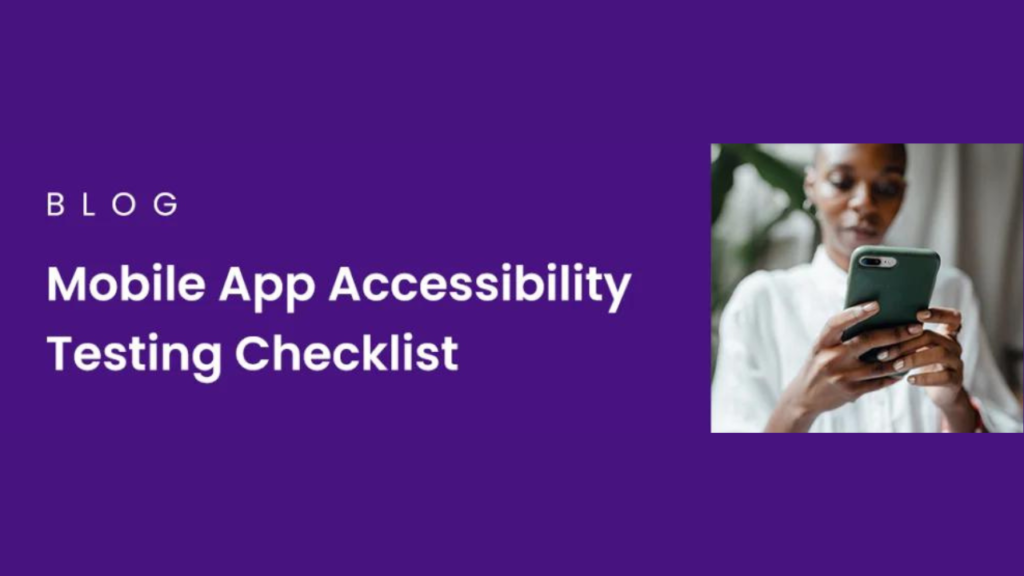Ensuring consistency and reliability is critical in the development of mobile applications. Comprehensive approaches for accessibility testing for mobile apps are becoming important as user expectations rise and apps become more complicated. Sanity testing and regression testing are two essential cornerstones of the testing environment.
Both are essential to preserving the integrity of the application, but they have different functions and happen at various phases of the development process. To offer faultless user experiences, quality assurance teams and mobile app developers must understand the critical differences between these testing approaches. Let’s analyze the subtleties of regression and sanity testing, shedding light on their unique traits.
The Foundations of Mobile App Testing
Understanding the larger context of mobile app testing is essential before delving into sanity and regression testing details. There are many devices, operating systems, and user scenarios to consider in the highly diverse mobile app environment. Due to its complexity, an app must be thoroughly tested to guarantee that it operates consistently in various settings.
Functional testing, performance testing, usability testing, and security testing are just a few of the many techniques used in mobile app testing. Every kind of testing has a distinct function in the whole quality control procedure. Sanity testing and regression testing are vital benchmarks at various phases of the development process.
Understanding Sanity Testing in Mobile App Development
Sanity testing is a targeted and constrained testing methodology frequently referred to as a subset of regression testing. Its main objective is promptly ascertaining whether a specific app function functions as intended following a modification or bug patch. When time restrictions prohibit running the entire regression test suite, sanity testing is especially helpful in developing mobile apps.
The speed and ease of use of sanity testing are its primary features. Usually, it consists of a limited number of accessibility tests for mobile app cases that cover the essential features of the application. A sanity test can include checking that users can still correctly log in, access their account information, and carry out basic tasks within a mobile app that just underwent updates to its login process.
Sanity testing has several benefits for mobile app developers, including its rapid identification of significant problems that can prevent additional testing or development. Developers and testers can save time and costs by identifying substantial issues early in the process and concentrating on essential functionality.
It is crucial to remember that sanity testing is not a comprehensive process. It does not address every circumstance or edge case that could arise. It is not meant to find every fault or problem but to evaluate the app’s fundamental stability and functionality quickly.
Diving into Regression Testing for Mobile Apps
Regression testing is a more comprehensive and in-depth quality assurance method than sanity testing. Its main objective is to ensure that new features or modifications to the code haven’t negatively impacted already-existing functionality. Regression testing is essential in developing mobile apps to preserve the general stability and dependability of the application through several upgrades and versions.
Regression testing has a far wider use than sanity testing. Usually, a comprehensive set of test cases covering every facet of the application’s functioning is executed. Along with the essential functionality, these include edge cases, diverse user scenarios, and web application testing tools.
In developing mobile apps, regression testing is crucial in ensuring cross-platform compatibility. Regression testing confirms that the application operates successfully in various settings due to the mobile ecosystem’s vast array of devices and operating systems.
Additionally, regression testing acts as a safety net to identify unanticipated consequences of modifications to the code. Changing one section of the code in a complicated mobile app may occasionally impact functionality that doesn’t seem connected. Regression testing is done in-depth to assist in locating these unforeseen problems before they affect end customers.
Critical Differences Between Sanity and Regression Testing
While ensuring the quality and stability of mobile apps is the goal of both sanity and regression testing, there are some significant differences. Comprehending these distinctions is essential to putting into practice a successful testing plan.
Range and Depth: The most significant distinction can be found in the testing scope. Sanity testing is constrained and targeted, usually examining only the essential features of the application. Conversely, regression testing is all-inclusive and attempts to test every application part, including less-used features and edge cases.
Timing and Frequency: As a preliminary check before more thorough testing, sanity testing is typically carried out immediately following minor modifications or issue fixes. Regression testing can be carried out less regularly but more thoroughly. It is usually carried out following considerable modifications or before major releases with web application testing tools.
Time and Resource Investment: The small amount of resources needed for sanity testing makes it rapid. Frequently, it can be finished in a few hours. Regression testing requires more time and resources; complicated mobile apps may take days or weeks.
Automation Considerations: Regression testing is more frequently automated because of its thorough nature and requirement for repeated execution, even though both types of testing can be automated. Sanity testing can occasionally be done manually because it is more focused and frequently needs to be completed quickly.
Objective and Result: Finding out quickly whether the build is stable enough for more testing is the main objective of sanity testing. Regression testing ensures the application is stable and ready for release and that new modifications haven’t introduced flaws in already-existing functionality.
Conclusion
Sanity testing provides a quick way to evaluate fundamental functionality, enabling teams to spot serious problems early on and go on with confidence. Regression testing offers the comprehensiveness required to guarantee overall program stability and identify minute defects that could go unnoticed.


